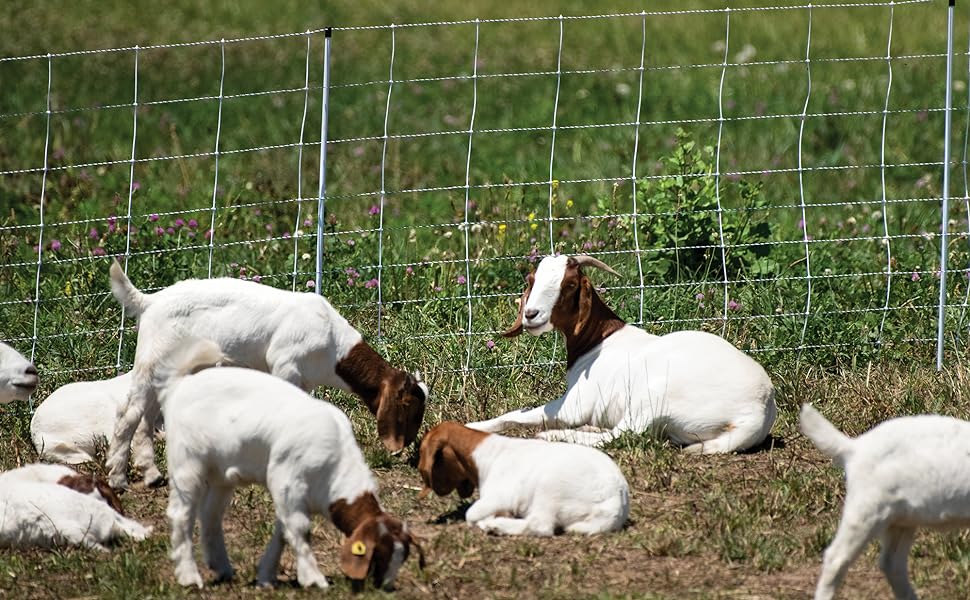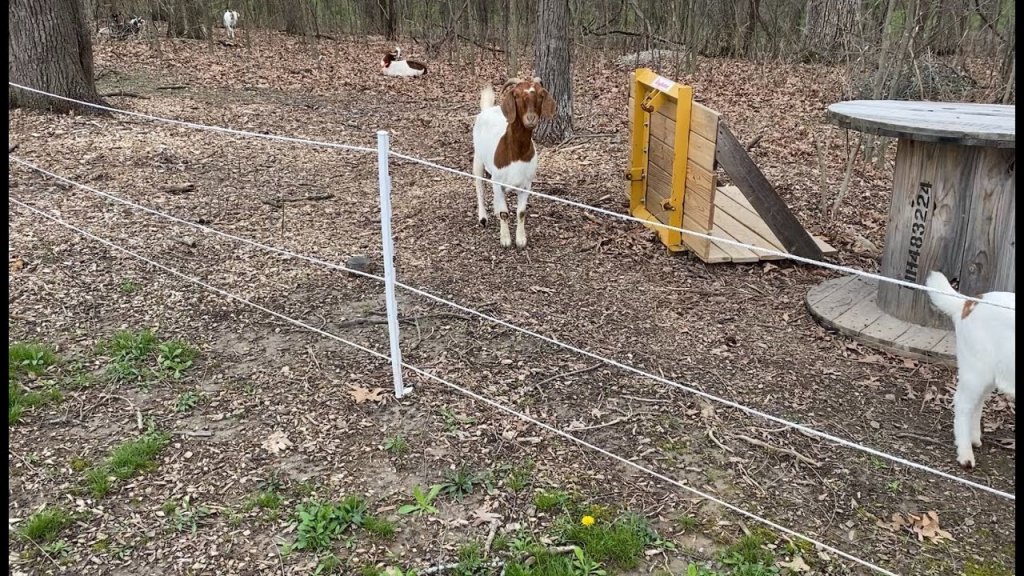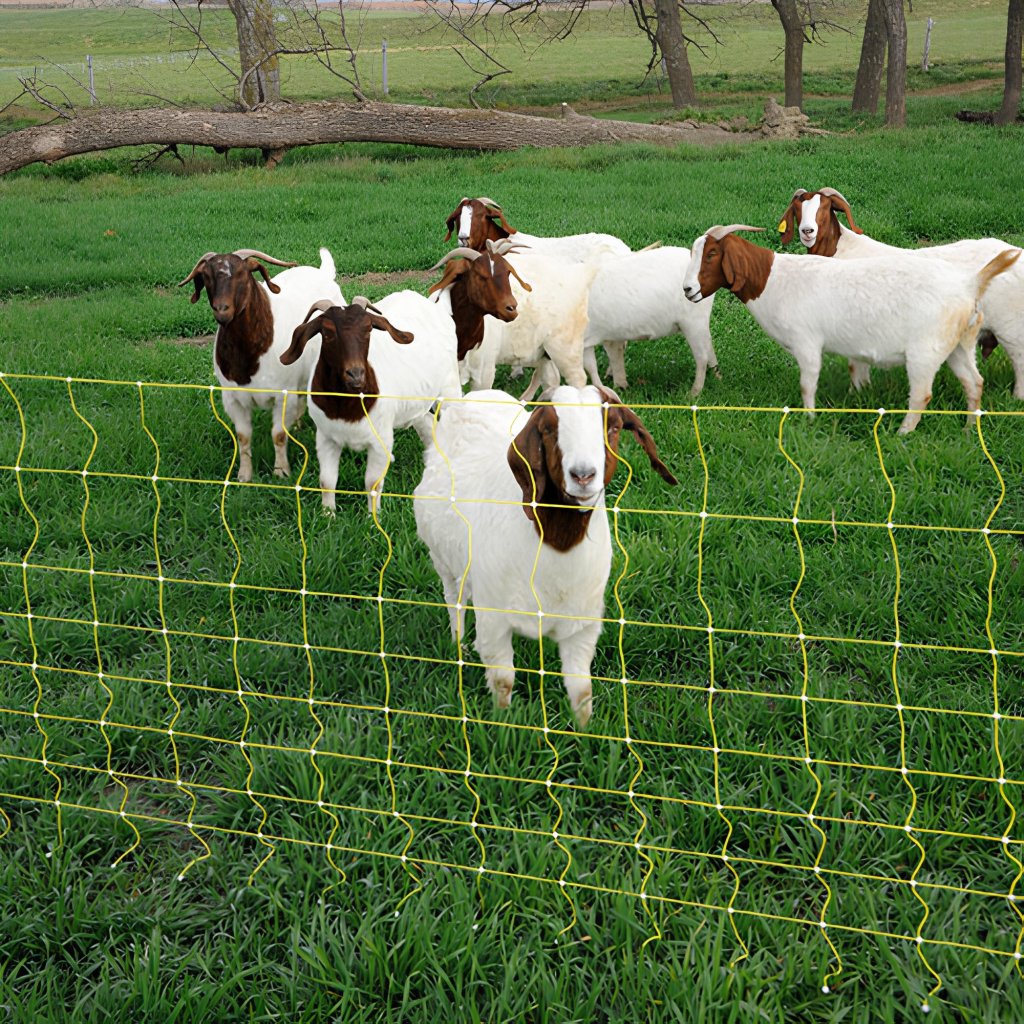Have you ever wondered how many strands of electric fence are required for goats to keep them safe and secure? Probably, it’s a question that bothers many goat owners and farmers who want to protect their livestock.
Knowing the right number of strands protects your goat, keeping them inside and the predators out. So, what number of strands are required?
While it can’t be answered directly, understanding some factors can help you know how many strands are required. It doesn’t matter if you’re a new goat owner or an expert farmer; the details have been broken down to the simplest so everyone can understand.
But, before moving forward, check out our previous blog on cheap goat fence ideas to get a clear visual into this content.
Let’s explore the right number of strands for goats and set up the same now!
The Right Number of Strands for Goat Electric Fencing

When choosing the right number of strands for electric fencing to protect your goats, you need to consider several factors. Here is a list enlightening you on the same:
Types of Goat: Not to mention that every goat breed has its jumping capability. For example, Nigerian dwarf jumps are not so high; therefore, a few strands are enough for them.
On the other hand, if you have active breeds like Boera, you may require a few more strands.
- Land: How does the terrain of your property matter? If it’s hilly, it’ll require more strands to refrain from any gaps or areas from where goats can escape.
- Predators: Considering what kind of predators are in your locality is crucial. If you have more of them, adding a few extra strands will provide extra safety to your goats.
- Budget: The number of strands is proportional to your budget, so balance the same with the level of security you need.
- Training: If your goats are trained enough, they’ll require fewer strands as they know how to respect the fence better.
Safety and Effectiveness of Different Strands

- Single Strand: If you’re using a single strand, though, it will be good for your pocket but not for your goat’s safety. They can slip under or over through it, which further is a call for injury.
- Two or Three strands: No doubt it’s an effective one from the single strand but still poses escape risks for agile goats. However, if you’re remember to maintain proper spacing to prevent goats from getting stuck between them.
- Four to Six Strands: This is probably the range most farmers use for their livestock. It offers a good level of safety. Again, spacing is necessary as it ensures goats can’t escape nor tangle themselves in between.
- Seven or more: Though this offers an advanced level of security, it might come as excessiveness in some situations. Further, it reduces the chances of escape and injury but isn’t pocket-friendly.
- Spacing and Voltage: Regardless of the number of strands you choose, remember to choose clearly visible strands; this will prevent goats from accidental contact.
Maintenance of Electric Fencing for Goats
Regularly maintaining your electric fences will ensure their effectiveness over the period and, hence, the safety of your goats. Here are some tips which will help you with the same:
- Routinely, i.e., over some days or a week, check the voltage of your fence to ensure it aligns with the recommended level. Low voltage will not deter goats effectively. In such a case, clean the energizer’s contact or replace the battery if required.
- Regularly gaze over all the strands for any damages, such as broken wires, loose insulators, or any vegetation in contact with the wires. If found, immediately replace the strand.
- If your terrain is grassy, keep the area around the fence free of tall grasses and weeds. Simply because vegetation touching the fence can drain power, it might create a path for goats to escape.
- Now, this matters the most: check your grounding system for corrosion or loose connections. A well-grounded fence is crucial for proper shock.
Conclusion
All in all, the answer to choosing the right number of strands for your goat electric fencing lies behind considering some factors like goat type, terrain, predators, and training. Further, maintaining these strands is crucial to ensure their effectiveness and, hence, goats’ safety.
Always remember the behavior and size difference in goats and other livestock. If it’s the same, you’re good to go; if not, adjust the strand height and spacing according to the animal you’re using it for to ensure maximum safety.
Hope the article helps. If you’ve any queries, feel free to drop them in the comment section, and we’ll resolve them promptly.
Frequently Asked Questions
How Frequently Do You Check the Voltage of a Goat Electric Fence?
Regular checking is necessary at least once weekly to ensure the fence voltage remains at the recommended level, usually 4000-5000 volts. Remember, maintenance is necessary if it’s below, as low voltage makes the fence less effective at deterring goats.
What to Do if Goats Are Afraid of Electric Fences?
It’s the most common concern, and the solution is simple. Start with a low voltage that’ll gradually help develop a habit with the fence in your goats. Ensure that goats don’t perceive the fence as a threat; this, in turn, helps them to learn to respect it without any fear.
How Do You Protect the Fences from Snow or Ice Damage?
If you’re in the snow region before the winter arrives, elevate the lower-level strands; this refrains them from being buried in snow. Further, ensure proper grounding and insulate exposed components, if any, to safeguard the fence from winter conditions.

